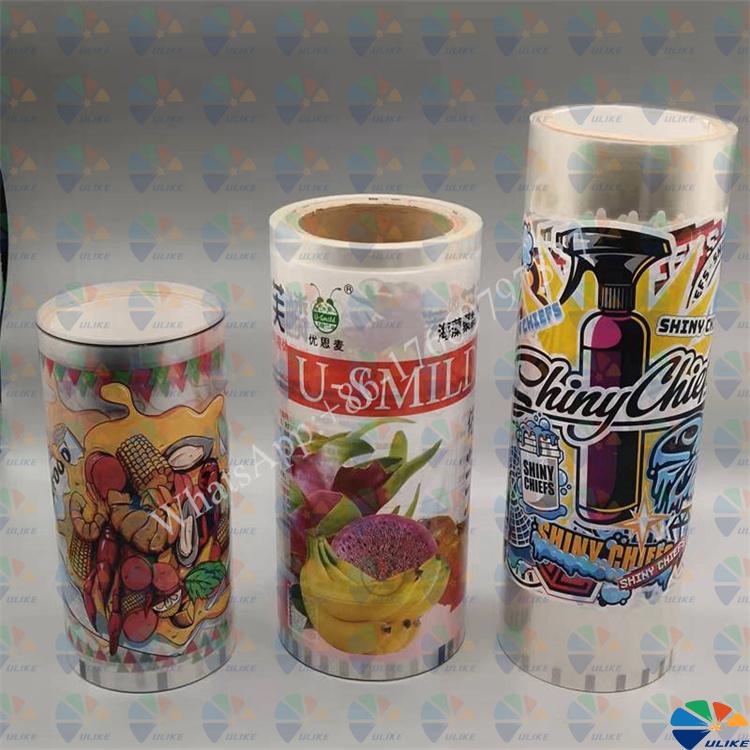Classification of thermal transfer films
Classification of thermal transfer films
1. Classification of
thermal transfer films
For those who are new to thermal transfer, it is very difficult to distinguish the classification of thermal transfer films.
Thermal transfer films are suitable for hot stamping on plastics, metals, leather, ceramics, wood and other products, and are widely used in products in industries such as daily necessities, cosmetics, stationery, toys, building materials, decorative materials, gifts, food packaging, signs and other industries, as well as surface printing and decoration of packaging.
The first impression of thermal transfer films on people is that they have a wide range of market applications and complex printing processes.
Below, the editor will take you to analyze the classification of thermal transfer films step by step.
Classification pictures of thermal transfer films
2. What is thermal transfer and thermal transfer film
To distinguish the classification of thermal transfer films, you need to first figure out what thermal transfer and thermal transfer film are.
Thermal transfer refers to the printing and processing of thermal transfer films according to the material of the substrate.
Thermal transfer film is a film with a pattern pre-printed on the surface of the film. It actually refers to a special functional printing film with a release agent, a protective layer, an adhesive and a base film as a carrier. Under the combined action of heating and pressure, the pattern is separated from the carrier base film and firmly transferred to the surface of the substrate.
3. Classification of thermal transfer films with pattern effects
First, we can classify according to the effect of transferring patterns on the substrate.
1. Ordinary thermal transfer film
Ordinary thermal transfer film, that is, thermal transfer film without any special effects.
2. Aluminum-plated thermal transfer film
Aluminum-plated thermal transfer film is based on ordinary thermal transfer film, with aluminum plating process, to coat the thermal transfer film with metallic luster.
3. Laser thermal transfer film printing
Laser thermal transfer film goes a step further on the aluminum-plated thermal transfer film, adding laser effects to make the product surface pattern more dazzling.
4. Classification of thermal transfer films by substrate material
Secondly, thermal transfer films can also be classified according to the material of the substrate. It can be divided into 4 categories.
1. Plastic thermal transfer film
Based on different plastic materials, it can be further divided into:
①ABS thermal transfer film, ②PP thermal transfer film, ③PE thermal transfer film, ④PS thermal transfer film, ⑤EVA thermal transfer film, ⑥pet thermal transfer film, ⑦PVC (leather) thermal transfer film, etc.

2.
Glass thermal transfer film
3.
Metal thermal transfer film
4.
Wood thermal transfer film
. . . . . . .
5. Reasons for the classification of thermal transfer films
Why do people in the thermal transfer industry classify thermal transfer films in this way?
This is closely related to the process difficulty of thermal transfer films. The higher the process difficulty of thermal transfer film printing, the higher the price.
For example: laser thermal transfer film price > aluminum-plated thermal transfer film price > ordinary thermal transfer film price.
At this point, I believe everyone will have a macro understanding of the classification of thermal transfer films.
![af]() Afrikaans
Afrikaans![sq]() Albanian
Albanian![am]() Amharic
Amharic![ar]() Arabic
Arabic![fr]() French
French![es]() Spanish
Spanish![ru]() Russian
Russian![de]() German
German![hy]() Armenian
Armenian![it]() Italian
Italian![ja]() Japanese
Japanese![ko]() Korean
Korean![pt]() Portuguese
Portuguese![hi]() Hindi
Hindi![az]() Azerbaijani
Azerbaijani![ro]() Romanian
Romanian![pl]() Polish
Polish![th]() Thai
Thai![el]() Greek
Greek![eu]() Basque
Basque![en]() English
English![zh-CN]() Chinese (Simplified)
Chinese (Simplified)![zh-TW]() Chinese (Traditional)
Chinese (Traditional)![be]() Belarusian
Belarusian![bn]() Bengali
Bengali![bs]() Bosnian
Bosnian![bg]() Bulgarian
Bulgarian![ca]() Catalan
Catalan![ceb]() Cebuano
Cebuano![ny]() Chichewa
Chichewa![co]() Corsican
Corsican![hr]() Croatian
Croatian![cs]() Czech
Czech![da]() Danish
Danish![nl]() Dutch
Dutch![eo]() Esperanto
Esperanto![et]() Estonian
Estonian![tl]() Filipino
Filipino![fi]() Finnish
Finnish![fy]() Frisian
Frisian![gl]() Galician
Galician![ka]() Georgian
Georgian![gu]() Gujarati
Gujarati![ht]() Haitian Creole
Haitian Creole![ha]() Hausa
Hausa![haw]() Hawaiian
Hawaiian![iw]() Hebrew
Hebrew![hmn]() Hmong
Hmong![hu]() Hungarian
Hungarian![is]() Icelandic
Icelandic![ig]() Igbo
Igbo![id]() Indonesian
Indonesian![ga]() Irish
Irish![jw]() Javanese
Javanese![kn]() Kannada
Kannada![kk]() Kazakh
Kazakh![km]() Khmer
Khmer![ku]() Kurdish (Kurmanji)
Kurdish (Kurmanji)![ky]() Kyrgyz
Kyrgyz![lo]() Lao
Lao![la]() Latin
Latin![lv]() Latvian
Latvian![lt]() Lithuanian
Lithuanian![lb]() Luxembourgish
Luxembourgish![mk]() Macedonian
Macedonian![mg]() Malagasy
Malagasy![ms]() Malay
Malay![ml]() Malayalam
Malayalam![mt]() Maltese
Maltese![mi]() Maori
Maori![mr]() Marathi
Marathi![mn]() Mongolian
Mongolian![my]() Myanmar (Burmese)
Myanmar (Burmese)![ne]() Nepali
Nepali![no]() Norwegian
Norwegian![ps]() Pashto
Pashto![fa]() Persian
Persian![pa]() Punjabi
Punjabi![sm]() Samoan
Samoan![gd]() Scottish Gaelic
Scottish Gaelic![sr]() Serbian
Serbian![st]() Sesotho
Sesotho![sn]() Shona
Shona![sd]() Sindhi
Sindhi![si]() Sinhala
Sinhala![sk]() Slovak
Slovak![sl]() Slovenian
Slovenian![so]() Somali
Somali![su]() Sudanese
Sudanese![sw]() Swahili
Swahili![sv]() Swedish
Swedish![tg]() Tajik
Tajik![ta]() Tamil
Tamil![te]() Telugu
Telugu![tr]() Turkish
Turkish![uk]() Ukrainian
Ukrainian![ur]() Urdu
Urdu![uz]() Uzbek
Uzbek![vi]() Vietnamese
Vietnamese![cy]() Welsh
Welsh![xh]() Xhosa
Xhosa![yi]() Yiddish
Yiddish![yo]() Yoruba
Yoruba![zu]() Zulu
Zulu


